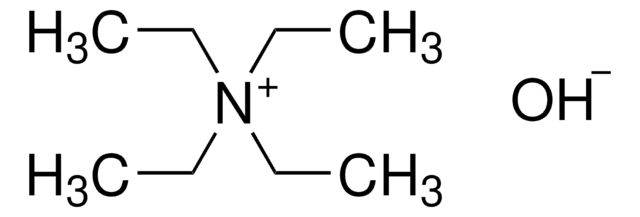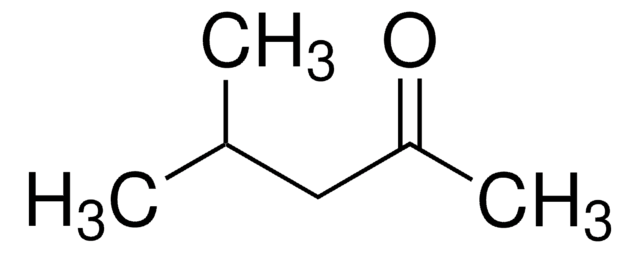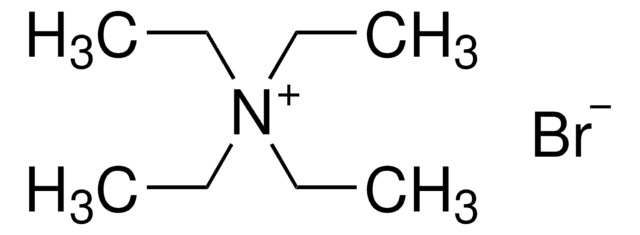86636
Tetraethylammonium hydroxide solution
~1.0 M (CH3CH2)4NOH in H2O, electrochemical grade
Synonym(s):
TEA hydroxide
Sign Into View Organizational & Contract Pricing
All Photos(1)
About This Item
Linear Formula:
(C2H5)4N(OH)
CAS Number:
Molecular Weight:
147.26
Beilstein:
3912961
MDL number:
UNSPSC Code:
26111700
PubChem Substance ID:
NACRES:
NB.61
Recommended Products
grade
electrochemical grade
Quality Level
form
liquid
concentration
~1.0 M (CH3CH2)4NOH in H2O
SMILES string
[OH-].CC[N+](CC)(CC)CC
InChI
1S/C8H20N.H2O/c1-5-9(6-2,7-3)8-4;/h5-8H2,1-4H3;1H2/q+1;/p-1
InChI key
LRGJRHZIDJQFCL-UHFFFAOYSA-M
Looking for similar products? Visit Product Comparison Guide
General description
Visit our Sensor Applications portal to learn more.
Signal Word
Danger
Hazard Statements
Precautionary Statements
Hazard Classifications
Skin Corr. 1B
Storage Class Code
8A - Combustible corrosive hazardous materials
WGK
WGK 3
Flash Point(F)
Not applicable
Flash Point(C)
Not applicable
Personal Protective Equipment
dust mask type N95 (US), Eyeshields, Gloves
Choose from one of the most recent versions:
Already Own This Product?
Find documentation for the products that you have recently purchased in the Document Library.
Customers Also Viewed
Min Shen et al.
Vascular pharmacology, 58(1-2), 64-70 (2012-07-24)
Evidence has indicated that resveratrol (Res) produces vasorelaxation and may decrease the coronary heart disease mortality. However, several pathways involved in the mechanism of vasorelaxation are still unclear. This study was designed, therefore, to test the probable ion channels or
Karen Mruk et al.
Proceedings of the National Academy of Sciences of the United States of America, 109(34), 13579-13583 (2012-08-08)
Calmodulin (CaM) is a ubiquitous intracellular calcium sensor that directly binds to and modulates a wide variety of ion channels. Despite the large repository of high-resolution structures of CaM bound to peptide fragments derived from ion channels, there is no
Dong-Mei Zhang et al.
PloS one, 7(10), e47030-e47030 (2012-10-12)
Cajaninstilbene acid (CSA) is a major active component present in the leaves of Cajanus cajan (L.) Millsp. The present study explores the underlying cellular mechanisms for CSA-induced relaxation in rat renal arteries. Vascular reactivity was examined in arterial rings that
Lei Yang et al.
The Journal of general physiology, 140(5), 529-540 (2012-10-31)
We investigated the effects of changing extracellular K(+) concentrations on block of the weak inward-rectifier K(+) channel Kir1.1b (ROMK2) by the three intracellular cations Mg(2+), Na(+), and TEA(+). Single-channel currents were monitored in inside-out patches made from Xenopus laevis oocytes
Jayabalan Nirmal et al.
Experimental eye research, 116, 27-35 (2013-07-31)
The present study was conducted to test the hypothesis; OCT may be active from blood-to-vitreous for the uptake of its substrates. Ocular uptake of Tetraethylammonium (TEA) across blood ocular barriers and the tissue distribution was evaluated in vivo in New
Our team of scientists has experience in all areas of research including Life Science, Material Science, Chemical Synthesis, Chromatography, Analytical and many others.
Contact Technical Service








